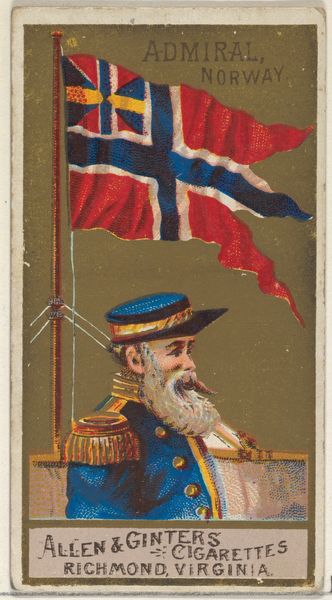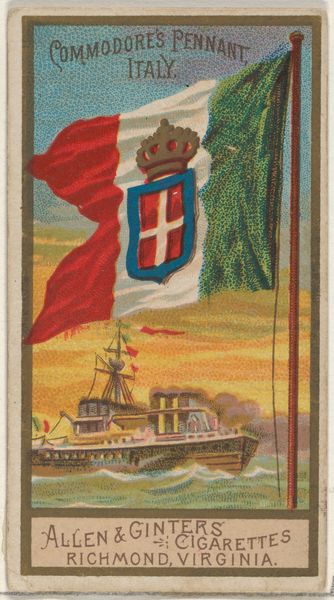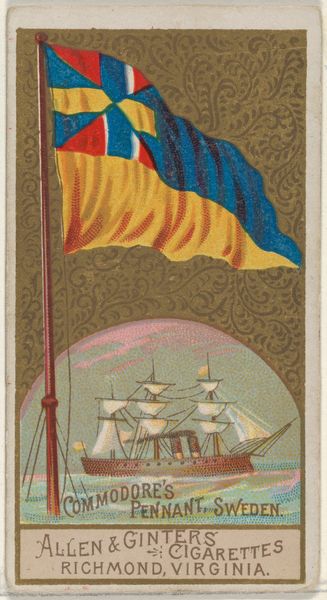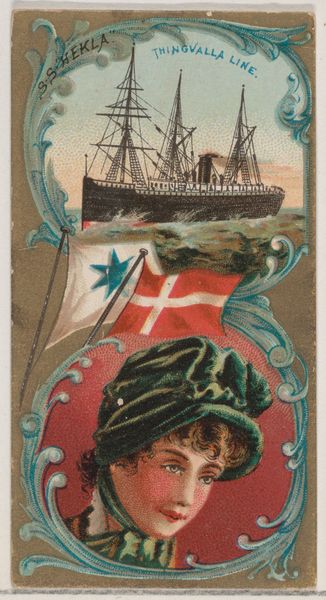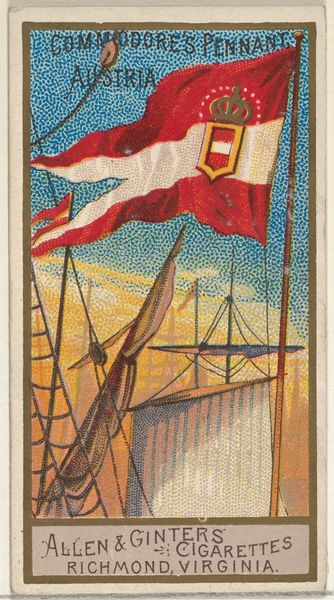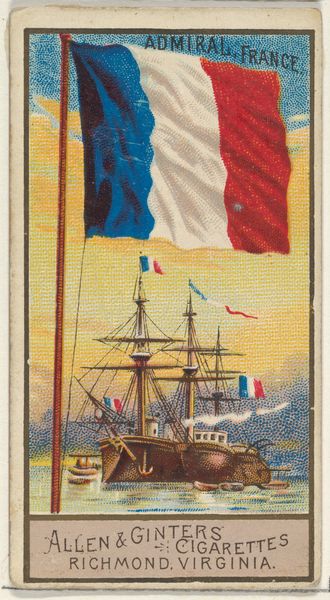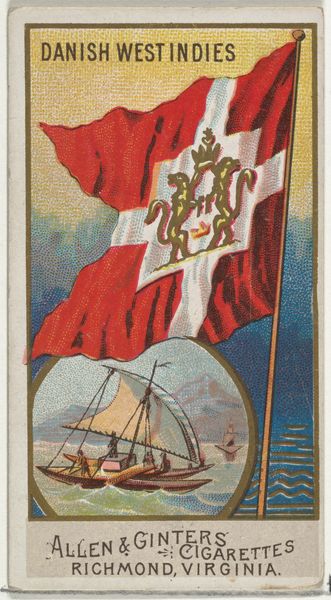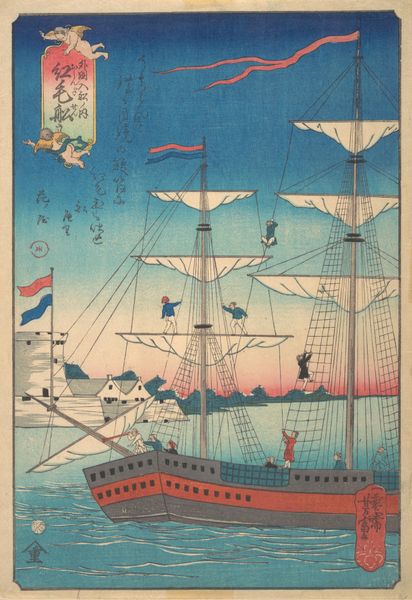
Commodore's Pennant, Norway, from the Naval Flags series (N17) for Allen & Ginter Cigarettes Brands 1886 - 1891
0:00
0:00
drawing, print, etching
#
drawing
#
ship
# print
#
etching
#
landscape
#
symbolism
Dimensions: Sheet: 2 3/4 x 1 1/2 in. (7 x 3.8 cm)
Copyright: Public Domain
Curator: This print, "Commodore's Pennant, Norway," created between 1886 and 1891, belongs to Allen & Ginter's Naval Flags series, a set made for cigarette cards. What strikes you first? Editor: The overall golden tone creates an aura of idealized maritime history, but it's immediately undercut by the stark contrast with the commodified context: cigarettes. It romanticizes labor while promoting harmful consumption. Curator: True, let's examine that contradiction. Allen & Ginter used etching and drawing techniques, a mass-produced print. This reveals much about the late 19th-century relationship between art, advertising, and industrial manufacturing processes. The flags were designed for collecting, driving brand loyalty. Editor: Precisely. The Norwegian flag dominates, its symbolism – the layered crosses – alluding to national identity, maritime power, and colonial reach. Its inclusion normalizes a specific, potentially exclusionary, historical narrative by promoting consumption through nostalgia. The artist created a vision of imperialist nations by using images to generate emotional investment in products. Curator: Consider also how the lower half depicts a rather idyllic seascape. Ships, instruments of both trade and potential war, are aestheticized as part of the landscape. These are all constructed fantasies within an industrial product—quite distanced from reality. Editor: Absolutely. This object asks what labor makes visibility for national dreams. What about who actually produces and consumes tobacco or crosses what waterways. These collectible sets contribute to erasing the colonial power structures inherent in them, reducing complexity to capitalist imagery and brand building. It becomes hard to detach a brand’s marketing image from labor struggles embedded in global economics. Curator: An uneasy partnership exists when high art aesthetics drive commerce; thinking through it is valuable today with the ongoing questions of ethical consumerism in modern branding. Editor: Exactly. It pushes me to critically consider what stories get packaged into seemingly harmless visuals to generate nostalgia, even now.
Comments
No comments
Be the first to comment and join the conversation on the ultimate creative platform.

